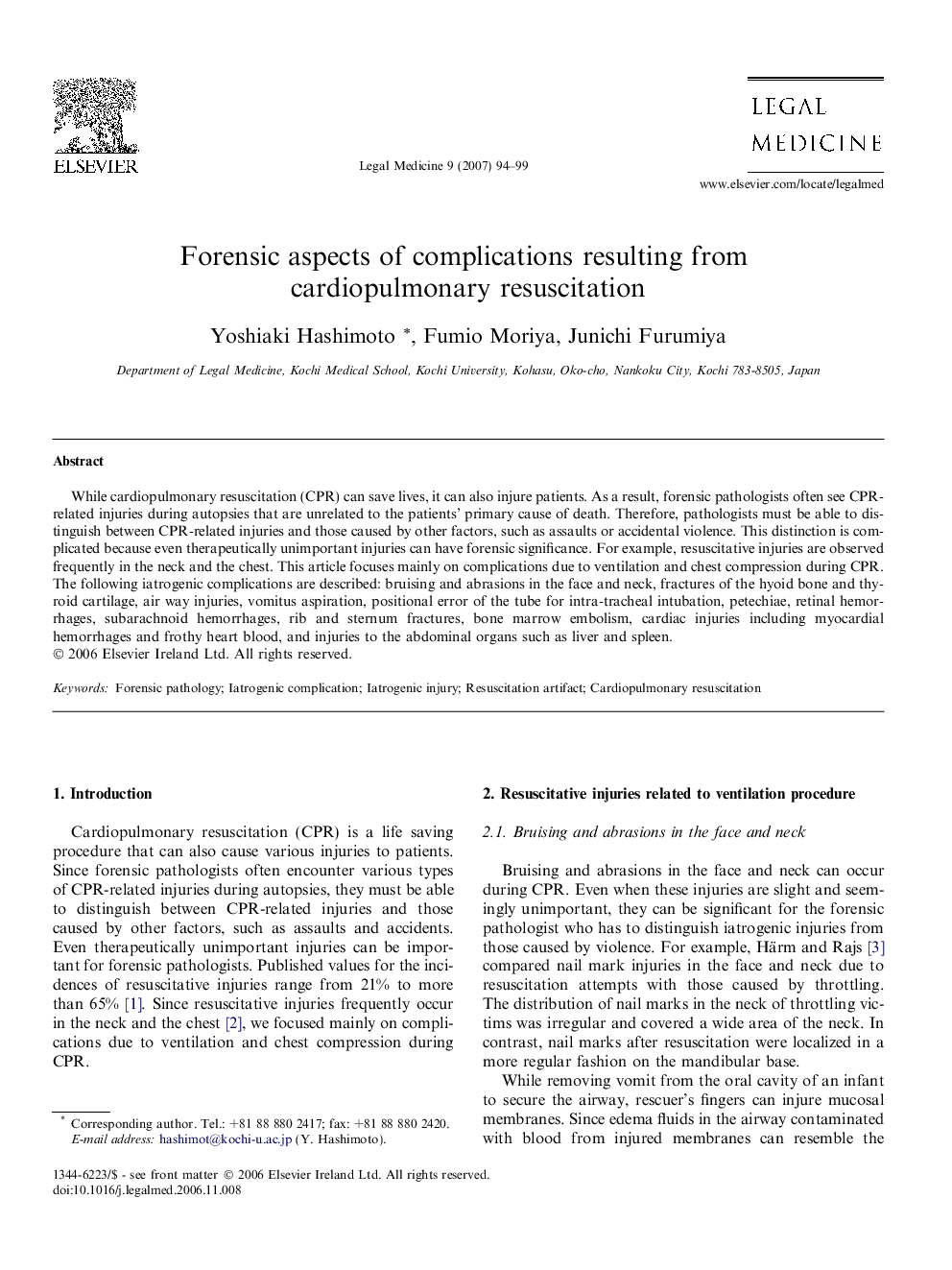| Article ID | Journal | Published Year | Pages | File Type |
|---|---|---|---|---|
| 104005 | Legal Medicine | 2007 | 6 Pages |
While cardiopulmonary resuscitation (CPR) can save lives, it can also injure patients. As a result, forensic pathologists often see CPR-related injuries during autopsies that are unrelated to the patients’ primary cause of death. Therefore, pathologists must be able to distinguish between CPR-related injuries and those caused by other factors, such as assaults or accidental violence. This distinction is complicated because even therapeutically unimportant injuries can have forensic significance. For example, resuscitative injuries are observed frequently in the neck and the chest. This article focuses mainly on complications due to ventilation and chest compression during CPR. The following iatrogenic complications are described: bruising and abrasions in the face and neck, fractures of the hyoid bone and thyroid cartilage, air way injuries, vomitus aspiration, positional error of the tube for intra-tracheal intubation, petechiae, retinal hemorrhages, subarachnoid hemorrhages, rib and sternum fractures, bone marrow embolism, cardiac injuries including myocardial hemorrhages and frothy heart blood, and injuries to the abdominal organs such as liver and spleen.
